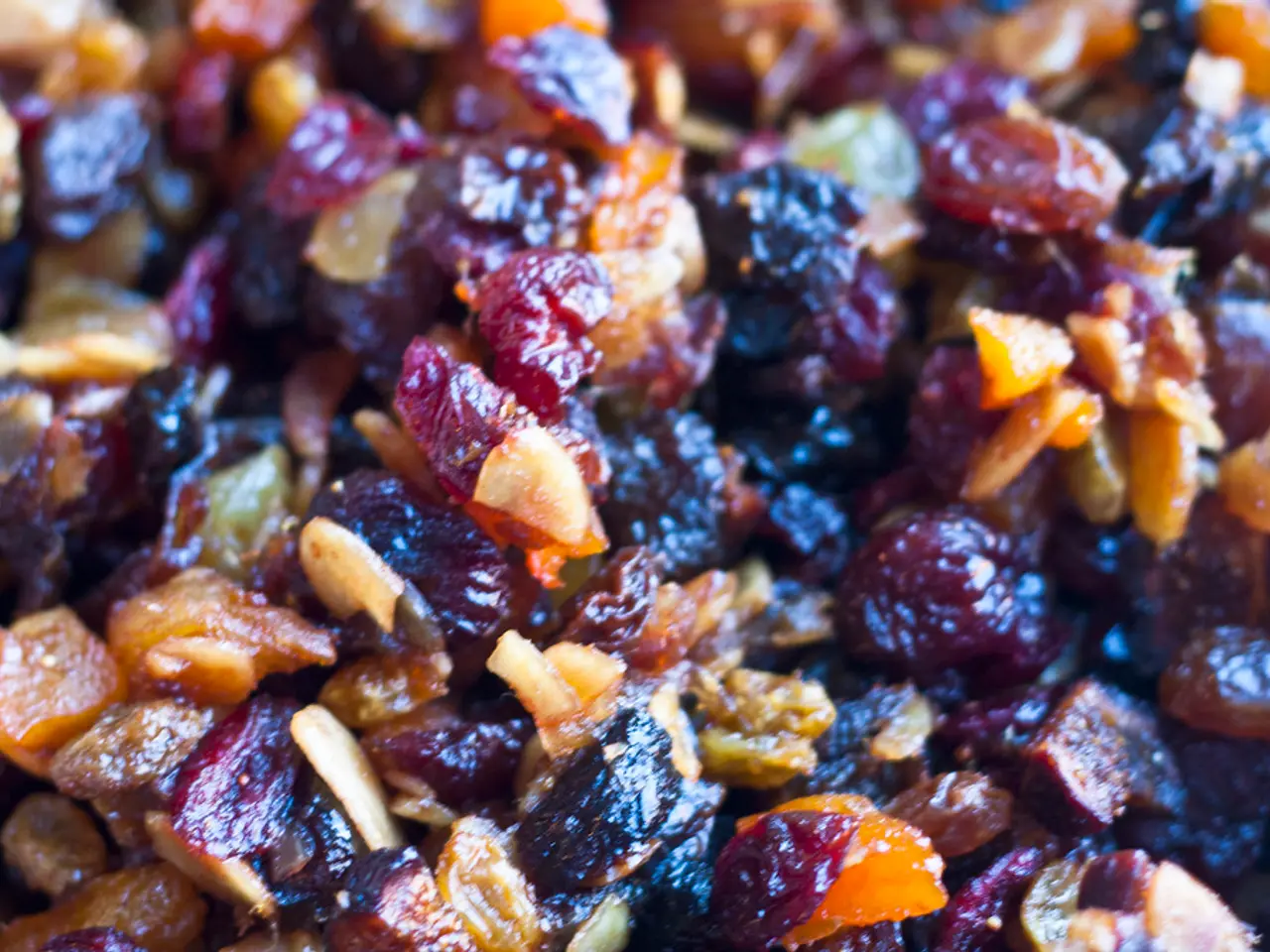Examining the Emergence of Functional Foods: Beyond Basic Nutrition
In the ever-evolving world of health and wellness, functional foods have emerged as a game-changer, revolutionising nutritional practices and moving beyond basic calorie intake towards health improvement activities.
Studies support the effectiveness of functional foods in improving heart health, cognitive function, and fighting oxidative stress. These foods, rich in probiotics, bioactive compounds, essential nutrients, and antioxidants, offer better nutrient absorption and support multiple bodily functions rather than just addressing deficiencies compared to dietary supplements.
As people become more health-conscious, they are shifting their focus towards foods that offer more than just basic nutrition. Aiding weight management is possible with functional foods that promote satiety and metabolism. For instance, high-protein foods like eggs, lean meats, and plant-based proteins help with muscle maintenance and appetite control, while fiber-rich foods like oats, legumes, and whole grains help lower cholesterol levels.
Functional foods are not just a trend; they are becoming an essential part of mainstream diets. With the rise of plant-based diets, functional foods like plant-based protein powders, dairy-free probiotic yogurts, and fortified nut milks are becoming popular alternatives to traditional options.
Health-specific functionality is a key trend in the rise of functional foods. Functional foods and beverages are increasingly formulated to support specific health goals such as weight management, gut health, heart health, immunity, and mental wellbeing. Consumer focus on immunity continues to grow, driving demand for ingredients like vitamin D, zinc, probiotics, and novel bioactives.
Functional beverages, such as botanical teas, kombucha, infused waters, mushroom-based drinks, and functional smoothies, are rapidly gaining popularity. These offerings provide health benefits while catering to trends like low- and no-alcohol lifestyles.
Innovations in ingredient formulations, increased consumer education, and integration with digital health tools are defining how functional foods contribute to personalised wellness strategies. They enable consumers to address preventive care, immune support, and chronic disease management through everyday nutrition choices.
Demand for clean labels and transparency is growing among consumers, with transparency in ingredient sourcing, nutritional value, and sustainability playing a significant role in purchasing decisions. Understanding the truth behind these claims can help individuals make more informed dietary choices.
The functional food market is robust, expected to reach about $268 billion by 2027. This growth reflects consumers’ willingness to pay premiums for functional foods that align with their specific wellness objectives.
Historically, certain foods have been valued for their medicinal properties. Today, functional foods continue this tradition, with examples including turmeric, rich in curcumin, known for its powerful anti-inflammatory effects, and omega-3 fatty acids found in salmon, flaxseeds, and walnuts, which support heart function.
Adaptogens such as ashwagandha and ginseng help reduce stress and enhance mental focus, while magnesium-rich foods like dark chocolate, nuts, and leafy greens support brain function and relaxation. Easy recipes using functional foods include Golden Turmeric Latte, Berry & Yogurt Parfait, and Avocado & Whole-Grain Toast.
Relying solely on functional foods is not a substitute for a well-rounded diet, and a diverse diet rich in whole grains, lean proteins, healthy fats, and a variety of fruits and vegetables remains crucial for overall health. However, incorporating functional foods into your diet can provide additional health benefits and support multiple bodily functions.
In conclusion, the rise of functional foods represents a significant shift in nutritional practices, offering targeted, evidence-based solutions that integrate seamlessly into consumer lifestyles and broader healthcare approaches. As consumer preferences, dietary habits, and industry trends continue to evolve, the future of functional foods promises to be exciting and full of possibilities.
[1] Nutrition Insight. (2021). Functional Foods & Beverages: The Future of Personalized Nutrition. Retrieved from https://www.nutrition-insight.com/content/functional-foods-beverages-future-personalized-nutrition [2] Healthline. (2021). The Functional Food Market is Booming. Here's Why. Retrieved from https://www.healthline.com/nutrition/functional-food-market-booming [3] Food Navigator. (2021). Functional beverages surge as consumers seek health benefits. Retrieved from https://www.foodnavigator-usa.com/Article/2021/02/24/Functional-beverages-surge-as-consumers-seek-health-benefits [4] Forbes. (2021). The Functional Food Market: A Growing Trend in Health and Wellness. Retrieved from https://www.forbes.com/sites/forbesagencycouncil/2021/03/01/the-functional-food-market-a-growing-trend-in-health-and-wellness/?sh=31c783f06e15 [5] Nutrition Insight. (2021). The Rise of Protein in Functional Foods. Retrieved from https://www.nutrition-insight.com/content/rise-protein-functional-foods
- Incorporating functional foods into a well-rounded diet, such as high-protein sources and fiber-rich foods, can provide additional health benefits to support multiple bodily functions.
- Wellness objectives like weight management, gut health, heart health, immunity, and mental wellbeing can be achievable through the consumption of functional foods and beverages.
- Functional foods offer better nutrient absorption compared to traditional dietary supplements, providing essential nutrients, probiotics, bioactive compounds, and antioxidants.
- Functional beverages, like kombucha, infused waters, and functional smoothies, provide health benefits while catering to trends like low- and no-alcohol lifestyles.
- Innovations in ingredient formulations and digital health tools enable consumers to personalize wellness strategies though functional food choices, addressing preventive care, immune support, and chronic disease management.
- Consumer focus on immunity continues to grow, driving demand for functional foods containing ingredients like vitamin D, zinc, probiotics, and novel bioactives.
- Examples of historical functional foods include turmeric and omega-3 fatty acid-rich foods that offer medicinal properties, such as supporting heart function.
- Adaptogens like ashwagandha and ginseng can help with stress reduction and mental focus, while magnesium-rich foods like dark chocolate, nuts, and leafy greens support brain function and relaxation.
- Consumers are willing to pay premiums for functional foods that align with their specific wellness objectives, contributing to the projected growth of the functional food market to reach around $268 billion by 2027.
- In today's health-conscious world, people are shifting their focus towards functional foods that offer health improvement activities beyond basic calorie intake, integrating seamlessly into consumer lifestyles and broader healthcare approaches.




